Could Mercury Poisoning Be Robbing You Of Your Health?
Mercury is a heavy metal that’s wreaking havoc on our modern world, and consequently, our modern health. Although mercury is a natural component of our earth’s crust and would normally only be released with an occasional volcanic eruption, industrialization has drastically increased the release of this damaging metal.

Dr. Mark Hyman, MD, a functional medicine expert, reports that there has been a 30-fold increase in mercury in our environment in a 100-year period. Not surprisingly, humans are to blame for 70% of this increase.1
Dr. Hyman emphasizes that practices like burning fossil fuels and chlorine manufacturing for plastics are two of the biggest contributors to the mercury problem in the environment. But other common practices, such as the manufacturing of fluorescent light bulbs and mercury thermometers in large enough supply, also contribute to our mercury-toxic environment.1
What happens when there’s more mercury in the environment? Well, we end up with more of it accumulating in our water and food. And when we’re chronically eating mercury-laden food and water, it ends up accumulating in us. As you’re about to find out, this gradual accumulation of mercury can lead to an insidious onset of a wide range of health concerns.
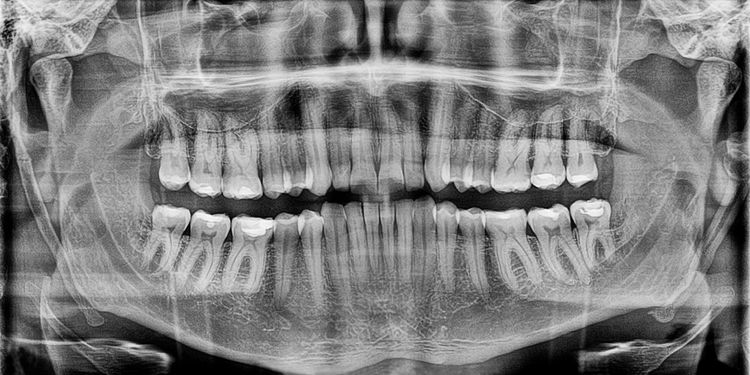
Perhaps the largest modifiable exposure to mercury is in the form of dental amalgams, or silver fillings. Despite the known toxic effects of mercury, conventional dentists are still using mercury to fill cavities.
Dr. Amy Nett, MD, a staff physician at Chris Kresser’s California Center for Functional Medicine, recognizes the scale and scope of the mercury problem in the surprising number of patients who show up with some level of mercury toxicity.
Dr. Nett outlines the three different forms of mercury to be aware of: elemental, inorganic, and organic.
The mercury used in fillings is elemental and can be inhaled as vapor, contributing to toxicity. The inorganic forms are a result of corrosion of elemental mercury to form a salt, happening either in the environment or in our mouths from our fillings. Organic mercury is also sometimes referred to as methyl mercury and can be formed from inorganic mercury by bacteria. This is the form of mercury to be concerned about when we eat fish, especially fish high on the aquatic food chain.2
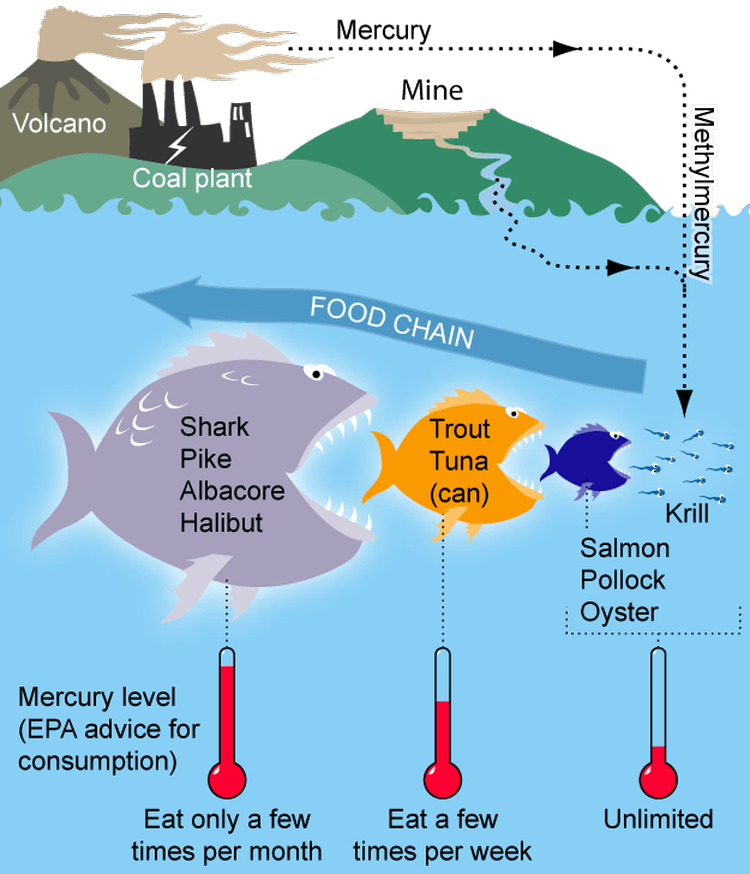
Why Is Mercury Dangerous?
You may be wondering what the big deal is with mercury contamination. The answer is multifaceted.
First, mercury is lipophilic, meaning it travels quite easily through fatty substances and tends to congregate in high-fat areas. Conveniently for mercury, our cell membranes are made of mostly fats in the form of a lipid bilayer. This makes it quite easy for mercury to be taken up out of the blood and into virtually any tissue.
High-fat tissues are particularly vulnerable to mercury storage. Unfortunately, your brain and spinal cord, which make up the central nervous system, have very high fat content, making them convenient reservoirs for mercury. For obvious reasons, this isn’t a good place to be storing a toxic substance and can explain the prominence of neurological symptoms in people with mercury overload.
Second, mercury has a relatively long half-life. A half-life is measured by seeing how long it takes to reduce a substance in the body to half of the original concentration. According to Dr. Amy Nett, it will take an average of 60 days for you to clear only half of an initial concentration of mercury in your blood.2 Dr. Mark Hyman reports that it may take up to 18 years on average to get half the concentration out of the body completely!1
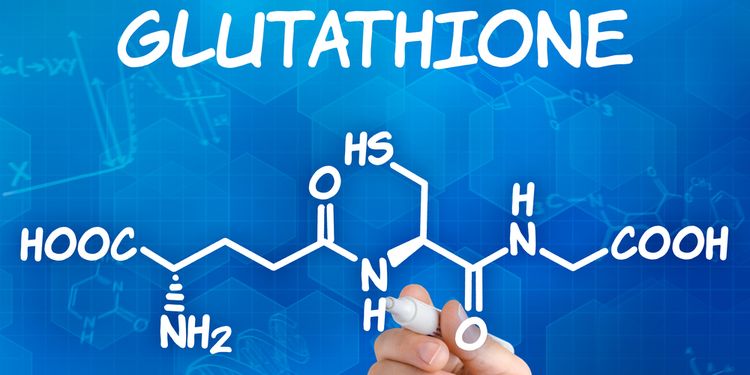
The key word here is average. There are huge variations in people’s susceptibility to the toxic effects of mercury due to individual differences in detoxification capacity. Most of the time, these differences stem from differences in glutathione status. Glutathione is the body’s major detoxifier in charge of binding and getting rid of toxic materials like mercury.
This compromise can be due to genetics, underlying inflammation, or both. These individual determinants can increase an already long half-life and tip the scales in favor of mercury accumulation and toxicity symptoms.
Unfortunately, we also absorb mercury shockingly well. Our body thinks it’s something that we need, especially when it’s bound to things that we do need! Dr. Hyman states that 80% of the mercury vapor we inhale is absorbed through the lungs.1 Additionally, about 95% of the mercury we digest, mainly inorganic and methylated mercury, is absorbed through the gut.
You can see with such a high absorption capacity how problems may occur if we don’t have an equal detoxification capacity. Over time, chronic exposures of even small amounts of mercury can add up to a much bigger burden.

How Mercury Impacts Your Gut
Your gut is the largest interface between your body and the outside world. It’s the gatekeeper that decides which nutrients you need and which nutrients to excrete. The functioning of a healthy gut is highly dependent on the healthy bacteria that overlay the intestinal cells.
Perhaps one of the most devastating effects of mercury is on the ecosystem of bacteria and the resulting dysfunction of the intestinal lining. Mercury can directly irritate the mucosal layer and indirectly cause damage by feeding opportunistic organisms like yeast and parasites that make a very hostile environment for the normal, healthy bacteria in the intestines.
The toxicity of mercury to the lining of the entire digestive tract can lead to overt digestive diseases like ulcerative colitis, irritable bowel syndrome, or more generalized abdominal pain, nausea, and vomiting.
The damage to the mucosal layer simultaneously leads to increased permeability or leakiness of our gatekeeper gut cells. This allows undigested food particles and other unwanted materials into the blood stream, prompting an immune response. With chronic mercury exposure, we get chronic inflammation from persistent immune activation stemming from a breakdown in the barrier of our gut. Mercury has also been shown to directly increase the levels of pro-inflammatory molecules regardless of the disturbed gut barrier.
There’s an inverse relationship between inflammation and detoxification that complicates the mercury problem. Dr. Amy Nett points out that that inflammation essentially turns off detoxification. This makes sense from a physiologic point of view. Inflammation is intended to be pro-oxidant in nature to try to kill or disarm whatever offender the immune system has recognized. Detoxification, specifically the action of the glutathione, is antioxidant in nature. Thus, running both processes simultaneously would be counter-productive.
You can start to see how mercury exposure can create a vicious cycle of toxicity starting from the gut. Disturbed bacterial homeostasis and leaky gut leads to immune dysregulation and inflammation, which further compromises detoxification and increases your overall susceptibility to mercury accumulation and resultant toxicity.
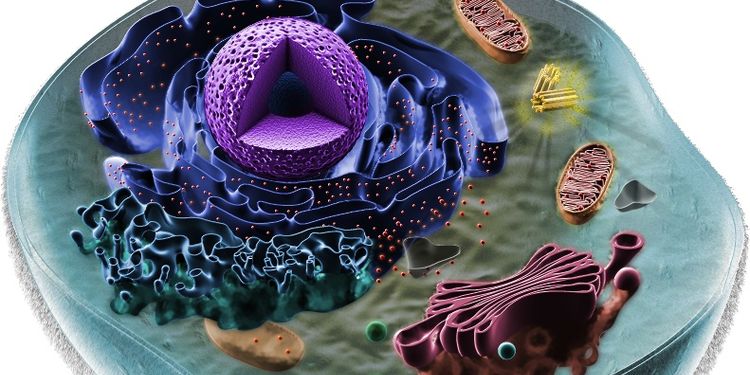
How Mercury Impacts Your Overall Health
Mercury’s disturbance to the gut is the gateway for systemic toxicity and constitutes only a small portion of the multi-symptom, multi-system effects of mercury toxicity. The root of the mercury problem is on the cellular level and begins to explain its system-wide effects.
- Mercury binds to enzymes, rendering them non-functional
Enzymes are cellular proteins that help your cells carry out biochemical reactions that are vital to their proper function, including DNA synthesis and energy production.
Mercury can bind to enzymes and render them inactive and unable to carry out their normal function. There are enzymes present in every single cell in your body. Thus, the toxic effect of mercury on enzymes can have an effect anywhere in the body.
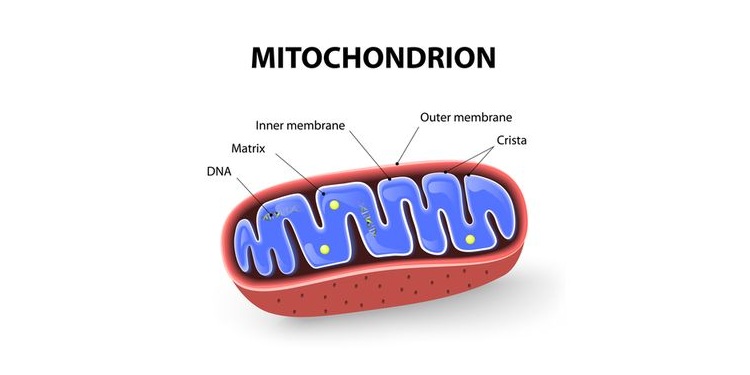
- Mercury directly damages mitochondria
The mitochondria are the energy-producing organelles in all human cells except the red blood cells. They are present in varying degrees in your tissues, depending on the energy requirement of the tissue. For example, your brain and heart need continuous energy supply and both have an abundant supply of mitochondria. This will in part explain why these organs may be more implicated in mercury toxicity than other tissues.
Just like our cell membranes, the mitochondria within the cells are encased in their own fat-filled membranes. Mercury is able to wander through the membranes and into the mitochondria, where they bind and deactivate enzymes critical for combating the reactive oxygen species that form with normal cellular energy production.
Mercury can also directly cause more oxidative damage in addition to the damage from excess amounts of free radical production. The huge amounts of oxidative stress from mercury lead to impaired mitochondrial function, deficits in energy, and can cause system-wide dysfunction and debilitating fatigue.
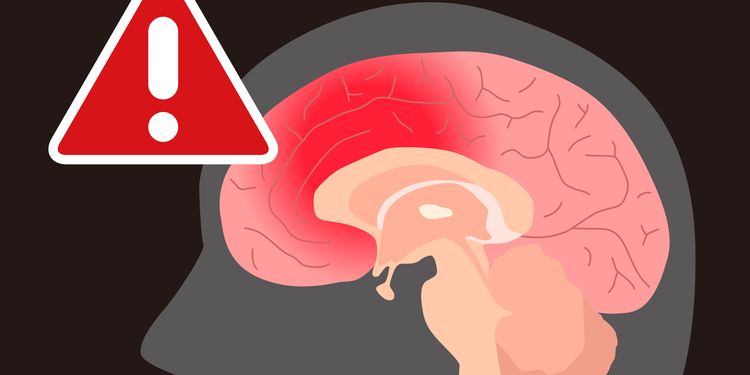
As mentioned previously, mercury loves to set up camp in the nervous system. As a result, neurological symptoms are the hallmark of a mercury-toxic person. And since your brain requires lots of well-functioning mitochondria to make its energy, the deficit in energy production in the nervous system can be prominent even if it’s small. The combined effects of direct damage and energy deficits in the nervous system can lead to problems with memory, changes in sensation, intense mood swings, anxiety, depression, paranoia, and even full-blown psychotic symptoms.
Mercury can also cause damage to the kidneys, leading to extra excretion of protein in the urine, known as proteinuria. Your heart is especially vulnerable to mercury-induced damage too. The heart has a high energy demand and relies heavily on mitochondria. Consequently, mercury toxicity can manifest as cardiovascular diseases like cardiomyopathy— disorders where the heart muscle isn’t able to properly contract due to deficits in energy production.3
Other systemic effects of mercury toxicity can include disruption of thyroid and sex hormones, immune sensitivity, autoimmunity, skin rashes, and many, many more. As we’ll see from the following personal stories, the manifestations of mercury are diverse yet share distinct commonalities.

Connie Fox’s Story
According to Great Smokies Lab, Connie was the most mercury-toxic person they had ever seen— so toxic that the vice president of the lab called to be sure that she was actually still alive, and to inform the ordering doctor of the gravity of her situation.
While this news would likely be devastating, Connie finally had a name for the mysterious illness that had been wreaking havoc on her life.
Before Connie started showing symptoms, she was happily engaged, living in her dream home, working her dream job, and was about to start her dream family- when suddenly her health took a turn for the worse. What started out as what Connie thought was a stomach flu turned into a mentally and physically incapacitating illness that took her life on a major detour.
In the first three weeks, Connie dropped from a healthy 125 pounds to a shocking 97 pounds, and was crippled with fatigue. But the anxiety and mental disturbance that accompanied this so-called stomach flu was nothing like Connie had ever experienced. She found herself in a constant state of fear with no real understanding of what was triggering it.
This generalized anxiety was complicated by repeated visits to the emergency room that yielded nothing but prescriptions for Valium, various anti-depressants, and a recommendation for a good therapist. According to the numerous ER doctors’ diagnostic tests, there was nothing physically wrong with Connie.
Her illness continued to worsen. On top of her gut pain and greatly diminished digestion, Connie developed head to toe pain. Her body became resigned to a permanent “L shape,” as Connie describes it, from being doubled over in pain. She tried the recommended anti-depressants and the therapy with little success. She began to feel judged and blamed by her fiance, who also believed that this illness was all in her head. After all, they were given no other logical explanation for her symptoms.
Connie decided to move to her separate property in Florida to try to sort out her illness with the help of her mother. She was becoming increasingly weak and fatigued and extremely sensitive to any sort of external stimulus. Just the sounds of the birds outside or the TV playing were too much for her to handle.
Her neurological symptoms were getting worse. She could hardly speak and was consistently slurring her words and losing her train of thought mid-sentence. Her fear was so consuming that she couldn’t be alone, even for a moment, because she was afraid of dying. Despite that fear of dying, she was also afraid that she would try to take her own life. Finally, Connie decided she could bear her symptoms no longer. She was desperate to end her agony and set a date to end her own life.
Just three days before that date, Connie saw one more doctor. This doctor, a chiropractor named Dr. Gerard Elmore, took the time to listen to Connie’s story and made the connection between the onset of her symptoms and a dental procedure just prior to the onset of her symptoms. It was Dr. Elmore who sent her hair and urine samples to Great Smokies Lab, prompting an immediate response from the lab’s president.
So, what did Connie have done in that dental procedure?
You guessed it- silver fillings. But what was unique about the amalgams Connie received was that they were surgically implanted underneath her gums and were most likely leaching mercury directly into her blood stream. This combined with a steady intake of farmed salmon lead Dr. Elmore to suspect that mercury was the cause of her torment.
It was a long road to recovery for Connie, with aggressive detoxification protocols causing many bouts of worsening symptoms. This was before Connie met Dr. Dietrich Klinghardt, MD, a master of chronic disease treatment and detoxification. With Dr. Klinghardt’s help, Connie was able to appropriately prepare her body to deal with the detoxification process and ultimately expel her mercury burden.
Connie has created the website mercurymadness.info to spread awareness of mercury toxicity and the importance of picking up on the warning signs. Here, she shares her full story, and a mercury detoxification protocol that attempts to bypass some of the awful side effects that she endured during her aggressive detoxification treatments.4
Alexander Bloom’s Story
Much like Connie, Alex’s toxicity was interfering with most aspects of his life.
But unlike Connie, it wasn’t until after Alex began his detox that he realized how toxic he really was— and how much his toxicity was interfering with his life.
Prior to detoxing his body, Alex remembers feeling consistently sad and depressed. He would find himself battling an inability to focus, binge eating disorders, and addictive behaviors. He was also low on energy and struggled with digestive disturbances that left him immobile for many hours at a time. And this was all despite a history of an extremely healthy diet.
Alex emphasizes the idea that diet is nothing without toxin removal, especially mercury, as he experienced himself within three months of a serious detox. He noticed changes in all of the areas listed above. He began experiencing profound feelings of happiness and emotion, as well as a clear mind. Alex also noticed that his addictive urges disappeared, and he felt an incredible connection to his intuition like he had never experienced before.
Alex felt, as he puts it, like Superman. He realized his true potential and a new normal, and there was no going back.
In his newly enlightened state, This site offers a brutally honest depiction of the before and after potential of a properly executed detoxification protocol. Alex also makes recommendations for detoxification that were instrumental in his success. The focus of the superman diet is not only on getting rid of heavy metals, but also parasites and other opportunistic organisms, like yeasts that constellate the modern toxic person.

Josh Macin’s Story
If it weren’t for the two stories above, it’s quite possible that Josh Macin wouldn’t be well enough (or even alive) to tell his mercury toxicity story today. Much like Connie, Josh noticed a slow, creeping change in his mental disposition that slowly took over his life.
Josh was living a seemingly charmed life. He had a great sales job, a girlfriend, and a place in Manhattan. Josh was also adorned with multiple jujitsu titles from competitive fighting all around the world in years past.
But he found himself in a sort of existential crisis. Josh began constantly questioning his life decisions and couldn’t shake the feeling that he had a deeper purpose. These questions began quickly darkening his disposition and completely consumed his thoughts, launching Josh into a cycle of anxiety and depression.
Like Connie, Josh tried the western medical approach to his worsening mental health with little success. Eventually, Josh began exploring alternative approaches, which lead him straight to the Amazon to try the infamous, indigenous plant medicine known as ayahuasca. One ayahuasca ceremony and only a couple of days later, Josh ended up back on a plane experiencing fits of pure terror.
Despite the sedatives it took to mitigate Josh’s panic after returning home, he was determined to try again. He would return to Peru not once, but twice, each time trying to deepen his spiritual experience to get to the bottom of his metaphysical unrest.
Each time Josh returned home, he found himself increasingly disillusioned. Everything seemed fast-paced and aggressive, and like Connie, he could feel an increasing sensitivity to his surroundings. Josh describes being so sensitive that a simple handshake would send him to the bathroom to vomit. He also describes the painstaking measures of meditation and morning ritual it took to prompt a daily bowel movement and a sense of calm.
Josh continued to look for answers in the plant medicine realm despite his failed experiences with ayahuasca. He was nearing the end of his rope and was desperate to escape the torture he felt in his body and mind. He sought out a plant medicine in Africa that would be even more powerful than ayahuasca, and begged his friends and family for financial support.
Josh gathered enough money, booked his flight, and planned this final trip. At this point, Josh knew that he would either return home a cured man or die trying. He even gave his family members important information, like account passwords, in case he met such a fate.
Thanks to Connie and Alex, Josh never took that trip.
First, he saw the striking resemblance between his story and Connie’s story on her website.
Second, he read and felt the brutal honesty in Alex’s words and finally understood how, despite his endless purging, fasting, and spiritual cleansing, he could still be very toxic with metals and parasites.
Josh followed in the footsteps of Connie and Alex, who quite literally saved his life with their stories. He created a platform for his own story and his detoxification guidance on thedetoxdudes.com.
It’s these raw, real-life experiences of Connie, Alex, and Josh that are increasing awareness of toxicity and the associated debilitating illnesses. In an increasingly toxic world, it’s crucial to spread awareness of the early warning signs to prevent pain and serious complications from misdiagnosis.

Signs That You Might Have Mercury Poisoning
The stories above make it very clear that a toxic brain is probably the most obvious sign that you might have a mercury problem. As Connie points out, there’s a reason mercury poisoning has historically been referred to as Mad Hatter Syndrome.
The prominent brain symptoms include drastic mood swings, emotional outburst of crying or laughter, poor focus, memory problems, and disturbances in sleep.1,4 Other overt neurological signs can include anxiety, depression, lack of coordination, slurring of words, neurologic pain, changes in sensation, vision problems, and tremors.
As mentioned above, mercury doesn’t discriminate against other parts of the body. Its damage to the gut can lead to increased intestinal leakiness, inflammation, and immune sensitivity. This can manifest not only as distinct gut symptoms like constipation or colitis, but also as joint pain, food allergies, skin rashes, and the development of autoimmune diseases.
Dr. Mark Hyman presents a shocking list of the disorders reproduced below that may be associated or complicated by an underlying mercury toxicity:1
- Chronic fatigue
- Fibromyalgia
- Depression/anxiety
- Obesity
- Dementia
- Parkinson’s disease
- Cancer
- Heart failure
- Heart disease
Hopefully it’s now clear to you how mercury could contribute to all of the above disorders. If mercury is involved in these disorders, especially the ones that have no “cure,” it becomes imperative to investigate if this heavy metal is partly to blame.
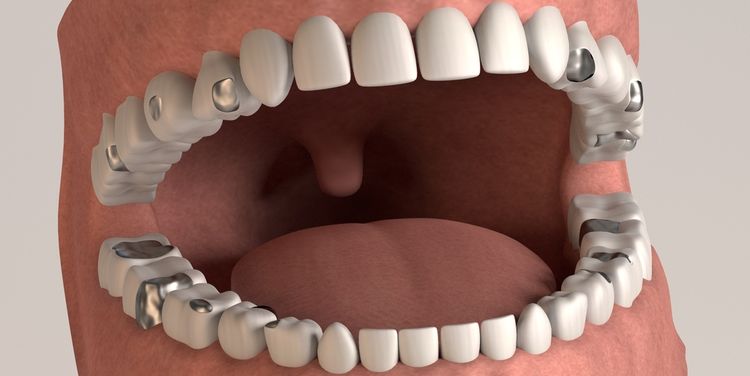
Determining Exposure: Amalgams, Tuna Fish, and More
An important step toward uncovering your potential mercury problem is determining the what, where, when, and how of potential mercury exposure.
It’s likely that every human alive in the modern world has some level of mercury toxicity. Because of its increasing abundance in the atmosphere and environment, mercury can be inhaled from the air and consumed in water and food (yes, even if it’s organic).
The major sources of mercury exposure are by far mercury amalgams and fish.
Dr. Hyman points out an important irony in his discussion of mercury toxicity and dental amalgams. Although the American Dental Association claims the safety of mercury amalgams, the Environmental Protection Agency treats removed amalgams as a hazardous toxic waste that must be disposed of in a particular fashion to avoid damage.
So, who’s to say it’s not a hazardous toxic waste in the mouth?
Well, research is starting to show that it may certainly cause problems in the mouth too. Dr. Hyman cites multiple research findings to support his amalgam argument:
- One study found a correlation between the number of mercury amalgams in pregnant mothers and higher mercury levels in the human placenta. Another study made a correlation between mercury amalgams during pregnancy and autism development in children.1
- In a study of chronic fatigue syndrome patients, 70% reported improvement in symptoms after their amalgams were removed (although the study wasn’t controlled).1
- 71% of patients with different types of autoimmunity reported an improvement of symptoms after replacing their amalgam fillings with alternative fillings.1
- Researchers found a link between mercury, nerve cell damage, and the formation of plaques present in Alzheimer’s disease.1
A word of caution: if you’re convinced that your mercury fillings could potentially be causing problems, don’t rush to get them removed right away!
Because mercury vapor is so volatile, even excessive chewing can lead to increases in exposure. Any defects or cracks in the amalgams will also likely increase the mercury vapor. It’s important to seek out a qualified biological dentist trained in low-emission removal techniques, should you decide to get rid of your amalgams.

On to the next biggest mercury offender: fish. Particularly fish high on the aquatic food chain.
Unlike amalgams, it’s a conventionally accepted truth that fish consumption can significantly increase our mercury levels. In fact, there are guidelines for pregnant women to reduce their intake of certain fish to only a few times a week since mercury can be so disruptive to the developing brain of a fetus.
But because fish are so nutritious, providing vital nutrients like omega-3 fatty acids and essential minerals, they shouldn’t necessarily be eliminated completely.
The general rule of thumb for fish consumption is the bigger the fish, the more methyl mercury will be accumulated in its tissue. This is because the bigger fish generally eat other fish that have accumulated mercury. Fish like tuna, swordfish, and mackerel are particularly high on the food chain, with exponentially higher mercury than smaller fish like sardines, herring, and anchovies.
It’s also important to consider whether or not the fish is farmed. Despite their size, farmed fish could potentially have large increases in mercury toxicity as well as the accumulation of other toxic compounds like PCBs.
Dr. Josh Axe points out another surprising source of mercury exposure: herbal medicines.
Although there will be some herbs that are very helpful to actually deal with mercury toxicity, not all herbs are created equally. Dr. Axe emphasizes that herbs grown non-organically overseas may come with mercury contamination. It’s important to know the source of your herbal medicines and whether or not they are tested for heavy metal contaminants.7
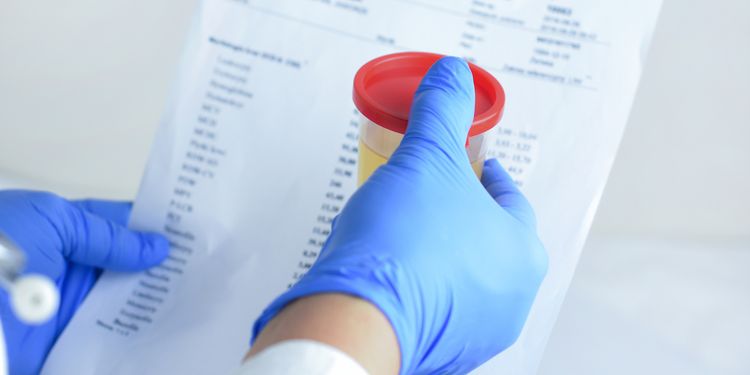
Testing for Mercury Poisoning
At this point, you’re probably wondering what the best way to quantitatively determine your mercury levels is— especially if you’ve experienced any of the signs, symptoms, and disorders that you now know may be related to high mercury levels.
Unfortunately, despite its long-term storage in the body, mercury quickly moves out of the blood and into the tissues. Because of this, a conventional blood test assessing mercury levels in the red blood cells will probably not be representative of your whole body’s mercury burden.
Another method for determining mercury levels is referred to as a mercury challenge test. The challenge utilizes pharmaceutical chelators like DMSA and DMPS to pull mercury from its happy home in your body’s tissues for excretion through the kidneys. The content of bound mercury is then measured in the urine and used to analyze your mercury load.
Dr. Christopher Shade, PhD and founder of Quicksilver Scientific, has a long history of investigating the chemical properties of mercury as well as the pitfalls in conventional testing. In an interview with Chris Kresser on Revolution Health Radio (RHR), Dr. Shade points out some concerns with a mercury challenge test.
For one, DMSA and DMPS are powerful pharmaceuticals and can cause serious worsening of symptoms from the rapid release of mercury into the blood stream. This combined with compromised detoxification is a recipe for increased toxic stress on the system.
Dr. Shade further emphasizes that these test generally use reference ranges from unchallenged urine, posing a problem for interpretation of the results. As we described earlier, most people have some level of mercury toxicity, and using unchallenged urine may be misrepresenting mercury levels in the “normal” population.8

Another method, and perhaps a more accurate method for determining mercury load in actual cells, is a hair mineral analysis. Because your hair is essentially just long strings of cells, the mercury content in the hair cells could most likely be representative of the mercury content in the rest of your cells. These tests also have the capacity to simultaneously test for other metals like lead and cadmium as well as potential deficiencies in other minerals like magnesium, zinc, and selenium.
However, Dr. Hyman points out that the hair mineral analysis is likely to only pick up methyl mercury, which again might lead to discrepancies in your measured and actual mercury toxicity.
So What is the Gold Standard of Testing?
A hair analysis might not be exactly representative of what is going on inside the cells of your nervous system or heart, since it’s still an indirect test. But if there are levels of mercury detected in the hair, that’s probably enough evidence to suggest you have high levels of mercury overall. There’s the added benefit in this test of analyzing levels of other metals and essential minerals that, taken together, can give a better overall picture of your individual toxicity and deficiencies.
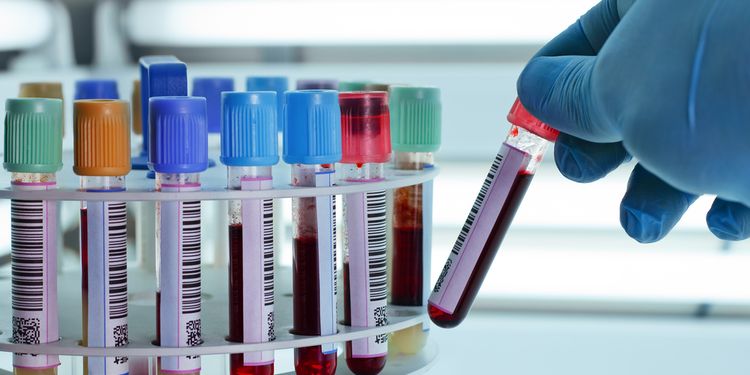
Analytical Research Labs (ARL) is a reliable testing facility as far as hair mineral analysis goes. ARL also offers comprehensive interpretations of results along with suggested diet and lifestyle modifications to improve mineral deficiencies and minimize metal toxicities.9
Dr. Shade at Quicksilver Scientific has also spent considerable time and research considering the best way to assess mercury levels. From his work with environmental mercury, Dr. Shade has developed a way to distinguish between methyl mercury and inorganic mercury present in the blood called mercury speciation. Dr. Shade advocates for speciation with a combined interpretation of blood, hair, and urine tests to determine which types of mercury are causing a problem and how well your kidneys are dealing with the burden.

How to Treat Mercury Poisoning
If you’ve made it to this part of the article, you’re probably anxious to start getting rid of your mercury load, regardless of levels or symptoms of mercury toxicity.
Perhaps the most important step in heavy metal detoxification has nothing to do with the physical removal of metals from the body.
The next section includes steps that will help prepare your body for a safe detoxification experience. It’s vitally important to first set the groundwork for a successful detoxification to avoid re-intoxication with mobilized mercury.
The Multi-Step Approach to Fully Recovering Your Health
- Reduce exposure
This might seem obvious, but it’s the important first step to recovering your health and will make the subsequent steps much easier. Start with easily modifiable exposures such as high-mercury fish and herbal medicines of unknown quality. You can also consider seeking out a qualified dentist for amalgam evaluation and removal if you experience serious toxicity symptoms.

- Optimize diet
A healthy, nutrient-rich anti-inflammatory diet is fundamental to an efficient detox.
While individual definitions of a “healthy” diet may vary, some general principles include adequate intake of complete protein sources, a wide variety of organic vegetables, and lots of healthy fats! Including sulfur-rich cruciferous vegetables has the added benefit of facilitating detoxification in the liver.
There’s also wide variation in the types of anti-inflammatory diets, and different foods can cause problems for different people. Begin by eliminating common offenders, including wheat, sugar, dairy, corn, and soy. Remember, inflammation is directly counter to detoxification, so decreasing the inflammatory response is vital to prime your body for mercury elimination!

- Help the gut heal
In conjunction with your nutrient-dense anti-inflammatory diet, healing the gut lining and restoring your ecosystem of beneficial bacteria is the next important step in decreasing systemic inflammation.
Things to consider for gut healing include:
- L-glutamine: An amino acid the intestinal cells can use for repair
- Mucilaginous herbs: This can include slippery elm or marshmallow leaves and roots that can form a temporary protective coating over the lining of the intestine
- Bone broth: Bone broth is a constellation of nutritious proteins and minerals in an easy to absorb form.

Supplementing with Lactobacillus and Bifidobacterium probiotics or increasing consumption of raw fermented foods can help re-establish a healthy balance of bacteria in your gut. As was mentioned previously, mercury in the gut is a breeding ground for pathogenic bacteria, fungi, and parasites. These organisms can also directly cause inflammation so it important to take necessary steps to get these bad bugs back under control.
4. Optimize organs of elimination
It’s important to prime your body’s inherent ability to detoxify by supporting the main organs of elimination. This includes the liver, kidneys, colon, and even the skin.

- Liver: The herb milk thistle is an extremely valuable liver herb. It may be able to promote regeneration of liver cells and optimize glutathione levels simultaneously.
- Kidneys: Your kidneys are in charge of filtering things in your blood to be excreted in your urine. Burdock root may be helpful as a mild diuretic and tonic for your entire detoxification system. Adequate hydration will also be key for optimizing excretion through the kidneys.
- Colon: The big thing here is to keep things moving. Increasing hydration and including bulking laxatives like chia or flax seeds can help with this. Moving your body can also keep the colon moving, so make sure to incorporate some movement into your day.
- Skin: The skin is an under-rated organ of elimination. Sweat can carry a host of toxins out of the body, including mercury. You can try exercise, saunas, or steam baths to promote sweating. Take caution if you have an under-functioning thyroid, as is the case in many mercury-toxic people, as it may be harder to promote a sweat and easier to overheat!
5. Specific nutrients for facilitating detoxification
Once you’ve addressed your diet, gut, and elimination organs, you can start incorporating specific nutrients that can bind and help mobilize your mercury stores naturally.

- Glutathione or glutathione precursors should be administered either via IV or in liposomal form for proper absorption. Or you can promote glutathione synthesis with supplements like N-Acetyl Cysteine and vitamin C.
- Metal-binding foods like cilantro, chlorella, or alginate from seaweed can be used to start gently drawing mercury out of tissues while mitigating effects from re-exposures.
Once you’ve successfully incorporated the steps above, you can consider moving on to more aggressive chelation protocols. Certain practitioners like Dr. Mark Hyman advocate using pharmaceutical chelators under the close supervision of an experienced practitioner because there can be serious side effects if not done properly.1 Either way, you’ll likely experience benefits by simply adhering to the basic principles listed above.
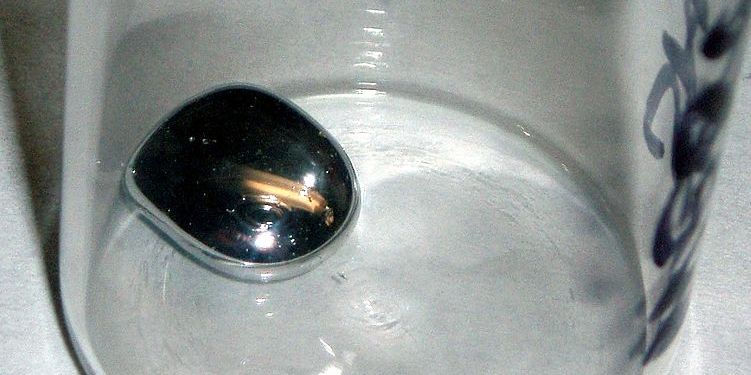
Key Things to Remember
Mercury toxicity is becoming extremely prominent in our modern toxic world. There are many factors that are contributing to this problem, as detailed above. A couple of key things to remember include the following:
- Susceptibility to mercury is determined by overall toxic burden, detoxification capacity, and levels of inflammation. All of these factors are compromised with a standard American lifestyle.
- Mercury is not well excreted but is easily absorbed. Consequently, small exposures over time can contribute to a huge problem. The two biggest contributors to mercury exposures are large fish and mercury fillings.
- Neurological symptoms and disorders could likely be caused or exacerbated by high levels of mercury and should be considered in treatment plans. Always be suspicious of this metal if there’s a sudden change in mental or emotional status.
- Detoxification is a lifestyle. Getting rid of mercury won’t be quick or easy, and requires crucial lifestyle changes to mitigate the side-effects of mobilizing mercury in the body.
Thanks to people like Connie, Alex, and Josh, there’s increasing awareness of the mercury problem. You can help raise awareness too by sharing your story, this article, or keeping the topic in the back of your mind for someone else experiencing some of the key signs and symptoms.
